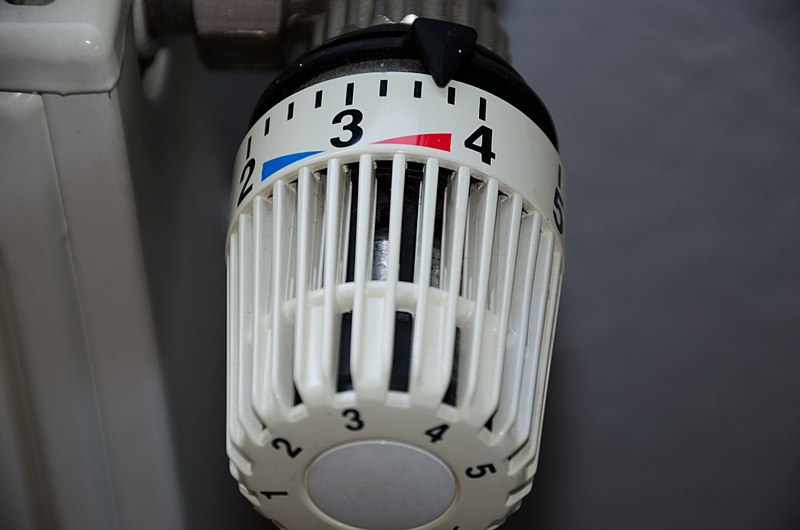One group has just raised a problem that’s very common. At the moment, if anyone uses any room at the rear of their church building, then four small rooms, a corridor, three WCs, and a church hall all heat up. To make it worse, one of those rooms is an office. Very often, there is one person working in there even if every other space is empty.
The ideal solution to this problem requires changes to the pipework to create different, independently controlled zones, but this isn’t usually feasible. The traditional solution is to put thermostatic radiator valves on the radiators so they can at least be controlled by hand, but as any building operator can tell you, letting groups set anything with permanent effects causes issues that will lead to low user satisfaction and high energy use – because users who are too warm will prop open windows and doors and users who are too cold will bring in portable heaters. Putting pins in to limit how far users can turn them up or down helps, but it’s not a complete solution.
There are two possible solutions that we can see.
The first is installing a “smart TRV” that is programmable using an app. There are already a number of vendors who provide these, all with competing apps. Exactly what they allow users to do at the radiator matters, because you need users to be able to do something to adjust their comfort, but not make permanent changes. If a user in each group needs to install the app, that might be fine if you have a few regular groups, but not if you have lots of individuals room hires.
If you need a lot of smart TRVs, the price escalates quickly. There are cheaper models that you program using tiny buttons on the TRV itself that might be suitable for venues with very regular building use and relatively well-behaved users. The problem is that almost any instructions are Google-able these days, and users do like to be helpful so they will program it if they can.
The second option is switch to a different form of heating in the small rooms – since these can usually be warmed up quickly, and often “on demand”. So in this case, the venue might choose to put in an electric radiator or radiant panels in the office. Although an electric radiator would be more expensive to run at present, this is the right direction of travel for decarbonising heating, and it’s going to be a lot less expensive than heating the entire hall. What choices to make in practice depend on who uses what spaces when, keeping in mind that could change in the future.
We haven’t been involved in specifying a smart TRV system before, but the first group that wants to do it for real will get serious attention from us in thinking about how their preferred options might work in practice. It’s the kind of “designing for people” problem that’s alien to most installers but that we think about a lot.
